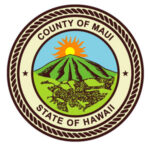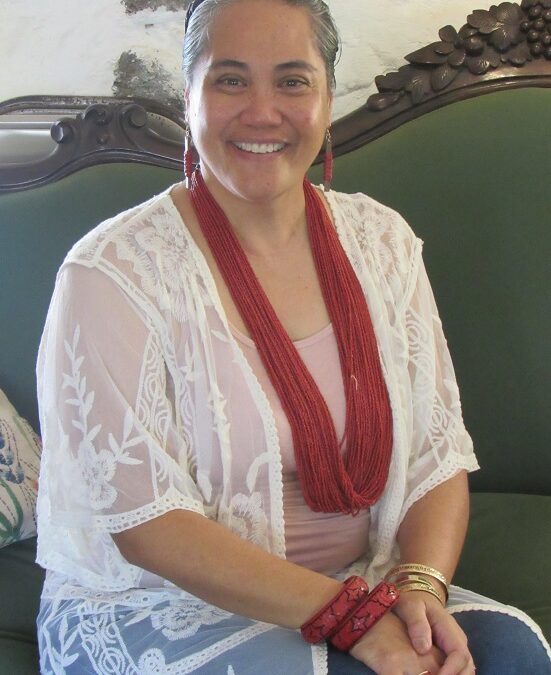
Feb 26, 2020 | Community
 The Bailey House Museum, one of Maui’s oldest surviving structures, now known as Hale Hō’ike’ike, is a jewel in the community. Located in historic Wailuku and operated by the Maui Historical Society, Hale Hō’ike’ike was dedicated as a museum on July 6th, 1957 and placed on the National and Hawaii Registers of Historic Places in 1972. The site offers a major collection of Hawaiian artifacts. The Archival Resource Center includes over 10,000 historic photos as well as maps, manuscripts, genealogy records, historical documents and more than 2,000 Hawaiian objects.
The Bailey House Museum, one of Maui’s oldest surviving structures, now known as Hale Hō’ike’ike, is a jewel in the community. Located in historic Wailuku and operated by the Maui Historical Society, Hale Hō’ike’ike was dedicated as a museum on July 6th, 1957 and placed on the National and Hawaii Registers of Historic Places in 1972. The site offers a major collection of Hawaiian artifacts. The Archival Resource Center includes over 10,000 historic photos as well as maps, manuscripts, genealogy records, historical documents and more than 2,000 Hawaiian objects.
Hale Hō’ike’ike Executive Director Naomi “Sissy” Lake-Farm, a Hawaiian cultural practitioner and Kumu Hula (master hula teacher) shifted the museum’s emphasis from strictly visitor admissions to community engagement. “I am enthusiastically celebrating my sixth year as executive director,” said Lake-Farm. “I feel a deep kuleana (responsibility) and connection to the history of the land and the museum’s mission. As caretakers of the land, we share the history and heritage of Maui through the artifacts, photographs, and documents that are entrusted to our care. It is essential that the cultural roots and history that define our community will continue to be there for future generations.”
Built as a mission house in 1833, Hale Hō’ike’ike’s location is the former royal compound of King Kahekili II, the last ruling chief of Maui. It was transformed into the Wailuku Female Seminary in 1837, and remained the home of missionary teacher and artist Edward Bailey and his family until 1888. Over the years, private donors, various organizations, and local families helped build the extraordinary collection. Today, the museum showcases Hawaiian culture and artifacts, as well as paintings and furnishings of nineteenth-century Maui, a museum gift shop, and the Chas Fisher Memorial Gardens including native and missionary-era flora and fauna.
Lake-Farm added, “I have an amazing and knowledgeable staff to help me. Together we offer numerous community activities such as guided tours, educational workshops, lecture series, and Hawaiian music concerts. On Saturday, February 29th beginning at 5pm we have a Moonlight Mele at Hale Hō’ike’ike with Uncle George Kahumoku, UHMC Institute of Hawaiian Music, and Tarvin Makia.”
I love sharing Maui’s past, present, and future with the community. My dad, John Keola Lake, was a renowned historian here in Hawaii and also a Kumu Hula. I was born into this work!
Naomi “Sissy” Lake-Farm, Hale Hō’ike’ike Executive Director
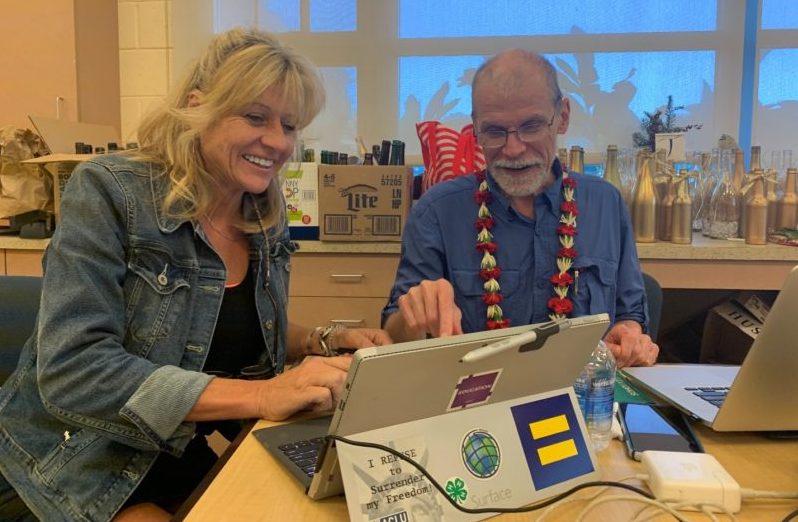
Feb 19, 2020 | Education

For over 15 years, Maui Economic Development Board’s (MEDB) STEMworks™ has partnered with Charlie Fitzpatrick, Environmental Systems Research Institute (ESRI) Education Manager. Together, they provide Geographic Information System (GIS) training for students and teachers throughout Hawaii. ESRI, the global market leader in GIS, creates the world’s most powerful mapping and spatial analytics software called ArcGIS. It supports not only industry, but also offers free software and lessons in K-12 subject matter. MEDB recently held a Maui GIS workshop to teach educators how to provide a map-based curriculum in the classroom.
“Students who embrace GIS learn a new way of problem-solving and can parlay their knowledge into paying work,” said Fitzpatrick. “GIS offers both a current and a historical perspective on our world, acting as an adjunct to textbooks. Students can explore at their own pace and drill down into maps to understand the context of coursework through the lens of geography, taking information in a raw form and making it more accessible. Schools are currently teaching with GIS software and students are reacting with enthusiasm. Today’s interactive maps really wow the kids. It is such a natural tool for students, who are digital natives.”
GIS shines in project-based learning where students have to create a question, go through steps to collect and analyze data, and then present their results. Anything can be studied with GIS. With project-based learning, the chosen subject forms the basis for the entire curriculum.
Jackie Provance, Kihei Charter School teacher, reflected, “I am excited to explore ESRI’s lessons and use them in my classroom. Part of the magic is that you can see, create, manipulate, and analyze the mapping data. Fitzpatrick encouraged us to explore the system and take it in different directions, at our own pace. These are powerful tools to engage students.”
“Fitzpatrick’s workshop was worthwhile and inspiring for me,” said Janyce Omur, Maui High School teacher. “His hands-on approach to GIS mapping made the workshop highly relevant and practical, affording us the opportunity to implement the strategies in our classrooms. I would highly recommend this workshop to all teachers.”
GIS can be applied to help solve a wide range of problems through hands-on experiences that teach valuable skills.
Charlie Fitzpatrick, ESRI K-12 Education Manager

Feb 12, 2020 | Community

Love is in the air! Assistance Dogs of Hawaii (ADH) is celebrating their 20th anniversary — graduating over 100 service dogs to serve in the community — individually and in community outreach programs such as hospitals, courthouses, and child advocacy agencies across the state.
“We specialize in training service dogs for children and adults with limited mobility,” said Executive Director Mo Maurer. “We approach the matching process from both sides — client and dog — knowing the client’s expectations, then training the dog with additional tasks specifically for its human partner. The dogs learn over 90 commands and assist their partners by performing tasks such as opening doors, finding help when needed, and turning on and off lights. It has been amazing to see how the dogs really go above and beyond once they are placed with their partners—they seem to have a sixth sense about knowing what they need. Our upcoming ADH Annual Valentine’s Benefit Event on February 22nd makes this all possible plus placing Service Dogs with lifetime follow-up support.”
Over the years, ADH dogs have rescued their partners from drowning, as well as alert a family member during a life-threatening seizure. “Dogs are extremely intelligent and have so much untapped potential to help people in need,” Mauer explained. “We published the first study teaching dogs to detect life-threatening bacterial infections in humans. Their accuracy rate was incredible and shows this has the potential to save many lives. We have been invited to present these findings at an infectious disease conference in Europe later this year.”
Sharon Dahiquist, ADH Assistant Director said, “I feel so lucky to have a job that is so rewarding—to truly help make peoples’ lives better. Our service dogs have enhanced, extended, and in some cases saved the lives of their partners. When Hawaii resident Melanie Johnson was trapped in a house fire, her service dog ‘Freedom’ brought her the cordless phone, and later pulled open the door to let the firemen in”. Johnson exclaimed, “ I would not be alive today if it were not for Freedom. He is my hero!”
Sometimes, even medicine cannot bring the feeling of love, wellness, and safety that a service dog can. For more information visit: www.assistancedogshawaii.org or call (808) 298-0167.
Mo Maurer, ADH Executive Director
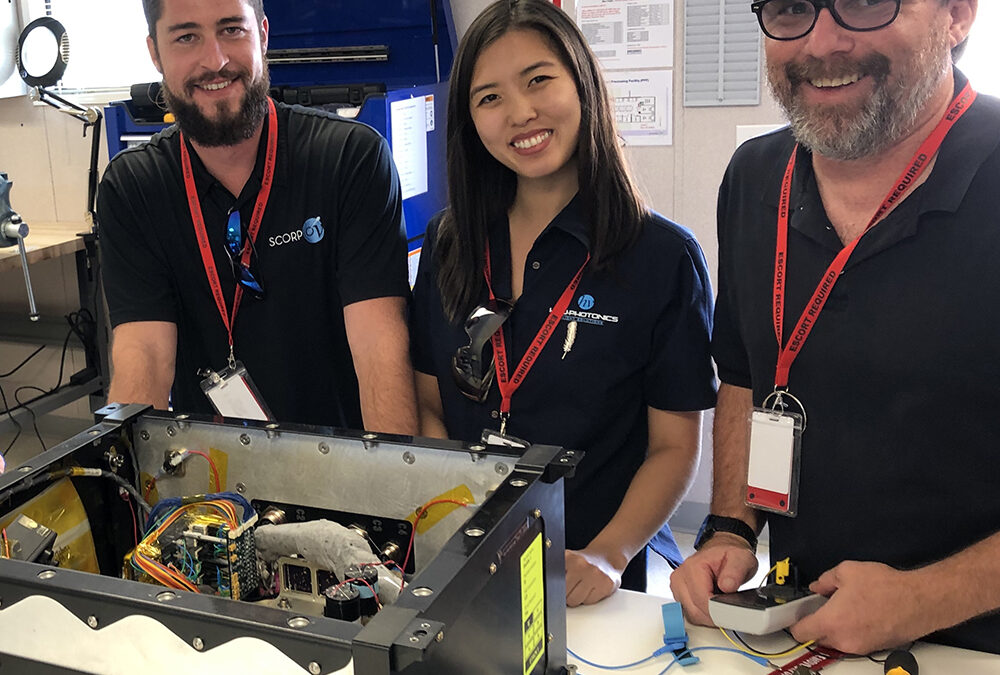
Feb 5, 2020 | Education, Small Business
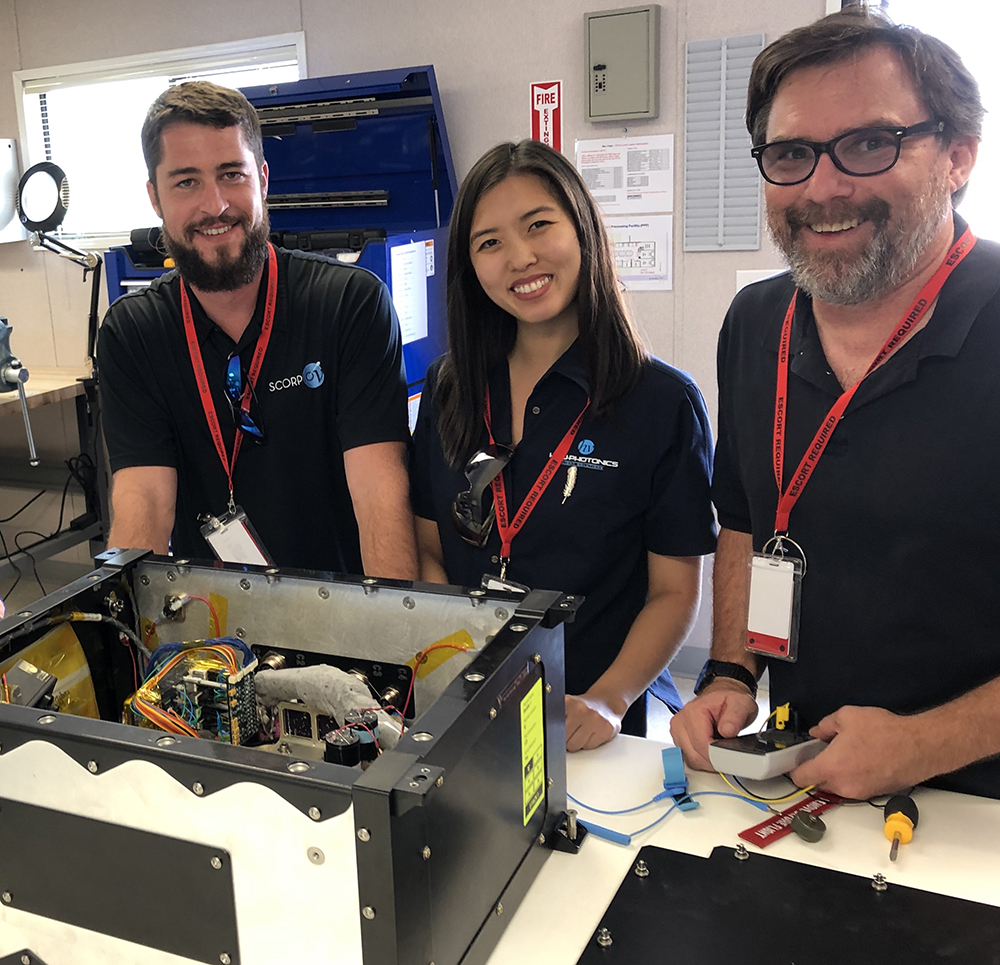
HNu Photonics LLC, an award-winning Maui science and technology company based in Kahului, brings another honor to Maui County for developing the Scorpio-V Mobile SpaceLab to study human biology on the International Space Station (ISS). “Maui Economic Development Board (MEDB) applauds HNu for aiding a better understanding of the impacts of life in space on the human body,” said Leslie Wilkins, MEDB President and CEO. “Over the last two decades the number of long-duration spaceflights have increased. Studies have shown the importance of additional research on the astronauts’ cognitive and behavioral activities due to microgravity.”
Scorpio-V, the space technology biological sciences division of HNu, designed the tissue and cell culturing facility which can perform biology experiments in space without the need for crew operations for as long as a month. “Scorpio-V’s Mobile SpaceLab, a fully automated, microfluidic and imaging platform, will perform the biological experiments on the ISS,” said Principal Investigator Dr. Caitlin O’Connell. “Our team of scientists will design and execute experiments to test the effects of microgravity on neurons and will control and monitor the experiments from Earth.”
O’Connell explained, “As the U.S. and other nations and organizations around the world expand space exploration, it has become imperative to better understand what life in space does to the human body in order to mitigate potential health risks. Furthermore, we think the neuron studies performed on the ISS with the Mobile SpaceLab will lend additional insights into earth-bound age-related cognition and decline.”
On Sunday, February 9, 2020, Northrop Grumman’s 13th commercial resupply mission for NASA, a Cygnus spacecraft on an Antares rocket, is scheduled to launch from NASA’s Wallops Flight Facility in Virginia and carry the Mobile SpaceLab to the ISS. In 2019, HNu Photonics was the first instrument builder to successfully be awarded a grant from NASA’s Space Biology Program to use the Mobile SpaceLab for its own biological experimentation during a roundtrip mission to the ISS. HNu Photonics was previously awarded a grant from NASA to include its instrument on a Blue Origin launch. Additionally, they have a Space Act agreement with NASA.
HNu is honored to be part of the science investigation and technology demonstrations on NASA’s February 9th mission to the ISS.
Caitlin O’Connell, Ph.D., Scorpio-V Principal Investigator, HNu Photonics
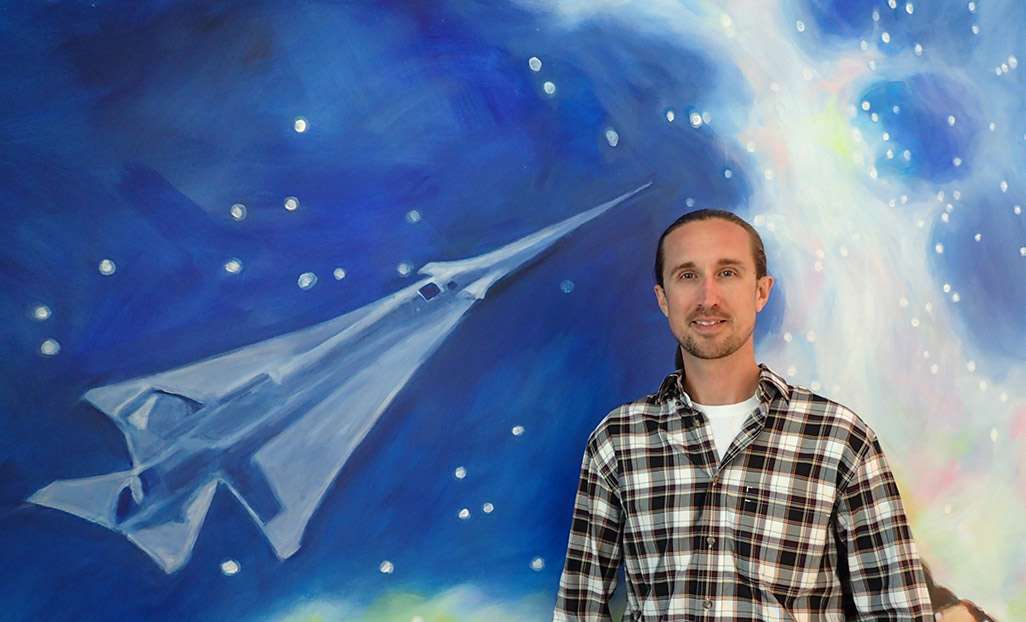
Jan 29, 2020 | Education

John Gaebler, part-time Maui resident working towards his PhD from the University of Colorado in aerospace engineering, has been a three-time participant in the Air Force Research Laboratory (AFRL) Scholars Program. In Hawaii and nationwide, this program offers stipend-paid summer internship opportunities to undergraduate and graduate level university students pursuing STEM (science, technology, engineering, mathematics) degree. If selected for an AFRL internship, scholars work with program administrators to arrange their travel and lodging.
The interns gain valuable hands-on experiences working with full-time AFRL scientists and engineers on cutting-edge research and technology, and are able to contribute to unique, research-based projects. Graduate interns are able to collaborate with AFRL on current research and incorporate that knowledge into their graduate work.
“Back in 2016, I was looking for opportunities to broaden my horizons, which led me to apply to the AFRL Scholars Program,” Gaebler said. “Working with the AFRL group on Maui was a great opportunity and probably my most intensive experience with deriving new mathematics.”
Gaebler’s passion and doctoral work is to solve the really challenging tracking problems that arise in maintaining an awareness of our space environment. Technology miniaturization is advancing small-scale satellites to the point where a shoe-box-sized CubeSat is capable of producing valuable science and commercial products.
“Rockets are now launching payloads with as many as a hundred CubeSats,” Gaebler explained. “After some clustered deployments, the CubeSats are so close together that it is nearly impossible to tell which satellite is producing individual tracking measurements. My research is focused on solving the estimation problem of detecting, tracking, and identifying each individual CubeSat after a large clustered deployment. I have also looked into generating initial orbit estimates from on-board camera systems, which could be obtained in near-real time during and after a deployment.”
Gaebler truly enjoyed his time at AFRL and made a lot of future contacts. “I would love to continue improving the state-of-the-art in surveillance tracking with a permanent position at AFRL and live on Maui permanently to pursue my spearfishing and freediving hobbies,” he said.
For more information on the AFRL Scholars Program, visit: https://afrlscholars.usra.edu/.
My work in the AFRL Scholars Program produced various journal submissions and conference papers. The work has also spawned two undergraduate research projects and competitions.
John Gaebler, AFRL Scholar

 The Bailey House Museum, one of Maui’s oldest surviving structures, now known as Hale Hō’ike’ike, is a jewel in the community. Located in historic Wailuku and operated by the Maui Historical Society, Hale Hō’ike’ike was dedicated as a museum on July 6th, 1957 and placed on the National and Hawaii Registers of Historic Places in 1972. The site offers a major collection of Hawaiian artifacts. The Archival Resource Center includes over 10,000 historic photos as well as maps, manuscripts, genealogy records, historical documents and more than 2,000 Hawaiian objects.
The Bailey House Museum, one of Maui’s oldest surviving structures, now known as Hale Hō’ike’ike, is a jewel in the community. Located in historic Wailuku and operated by the Maui Historical Society, Hale Hō’ike’ike was dedicated as a museum on July 6th, 1957 and placed on the National and Hawaii Registers of Historic Places in 1972. The site offers a major collection of Hawaiian artifacts. The Archival Resource Center includes over 10,000 historic photos as well as maps, manuscripts, genealogy records, historical documents and more than 2,000 Hawaiian objects.




